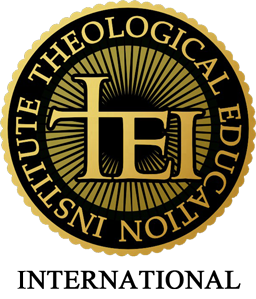Male and Female in Marriage
John C. Rankin
(December 18, 2012)
The power of Genesis 1-2 is unique when it comes to defining male and female. It is the only origin text in history that treats men and women as equals and complements, as image bearers of God and joint heirs of eternal life. In virtually all pagan stories, women are subjugated to an inferior status, and male promiscuity is virtually assumed. Genesis 1-2 is the only origin text in history that defines human sexuality as one man and one woman for one lifetime in covenantal marriage. Fidelity within, and chastity without. Out of marital trust children learn trust, and trust is the glue for any healthy social order. Once sexual intimacy breaks this healthy boundary, pain and multiple betrayals multiply, and human health is ill affected.
The literary structure of the first six chapters of Genesis makes this dynamically clear.
- The grand design defined in Genesis 1 shows how the trajectory of the creation is human life, and it is only complete when both man and woman together are declared to be made in the image of God. All is “good” in the creation process, and once man and woman are created, it is “very good,” with all in place. Healthy social order is thus defined.
- The covenant of freedom in Genesis 2 concludes with the man leaving the household of his father and mother, and joining into a new household where he becomes married, “one flesh” with his wife. This generation of new households defines the healthy social order.
- In Genesis 3, the ancient serpent aims to break the trust between woman and God, between man and God, between man and woman and vice versa, and thus, to tear down the social order. Satan was strategic. Yet, despite this brokenness of trust, redemption is promised through the offspring of the woman.
- In Genesis 4, this redemptive trajectory begins with the birth of Adam and Eve’s first two sons. But immediately, the war between the devil and promise of the coming Messiah is engaged with Cain’s murder of Abel. Five generations later in Cain’s lineage comes Lamech, the first bigamist, and also a boasting murderer. The social order is thus further assaulted as women are regarded as property, and human life expendable per sinful male egos.
- In Genesis 5, with the restatement of male and female created in the image of God, the birth of Seth to Adam and Eve reaffirms what was intended in the order of creation. The faithful line of Abel is restored through Seth, the healthy social order of generating new households.
- In Genesis 6, an exegesis of the Hebrew text shows that the “sons of God” refers to sons of kings who called themselves “gods” (common in the ancient near east and as theologically understood in Psalm 82). “Daughters of men” refers to women taken into royal harems – thus the despotic multiplication of male promiscuity, and in rendering women as property. This polygamy was the root evil of “how great man’s wickedness had become, and that every inclination of the thoughts of his hearts was only evil all the time” (6:5). Thus, the goodness of marriage in Only Genesis had devolved into the “only evil” of such sexual chauvinism. And thus the judgment of the Flood came.
- In Genesis 10-11, the historical seeds for Babylonian and Canaanite religion come into place, from which sexual and political male chauvinisms sprout again, and traced across the Bible.
- In Genesis 16, Abram falls prey to sleeping with a concubine in the attempt to fulfill the Messianic promise, as rooted in Sarai’s advice. The subsequent war between Sarai and Hagar follows and leads the way for the war between the seed of Ishmael and Isaac,between their lineages, the Arabs and Hebrews, up to the war between Islam and the Jews, and to war between nations of this day.
- In Genesis 19, the sins of Sodom and Gomorrah, and as traced across the Bible, lead to sexual anarchy that produces political anarchy that in sum tramples the poor and the needy.
- In the book of Malachi, the final prophet, Yahweh Elohim declares his hatred of divorce, and in the final words of Yahweh to the prophet, we read of the coming prophet Elijah: “He will turn the hearts of the fathers to their children, and the hearts of the children to their fathers.”
- Jesus answers a trick question on divorce with a restatement of the order of creation for the marriage of one man and one woman (Matthew 19:2-6).
- The apostle Paul assumes the fidelity of one man and one woman for one lifetime in marriage as prerequisite for church leadership (1 Timothy 3:2). And all this is theologically subsumed under the fidelity of Yahweh to Israel as his bride, and of Jesus to his bride, the church. In other words, marital fidelity between man and woman is the basis for trust in human society, rooted in the trustworthy love of the Father to the Son, to all of us.
###


